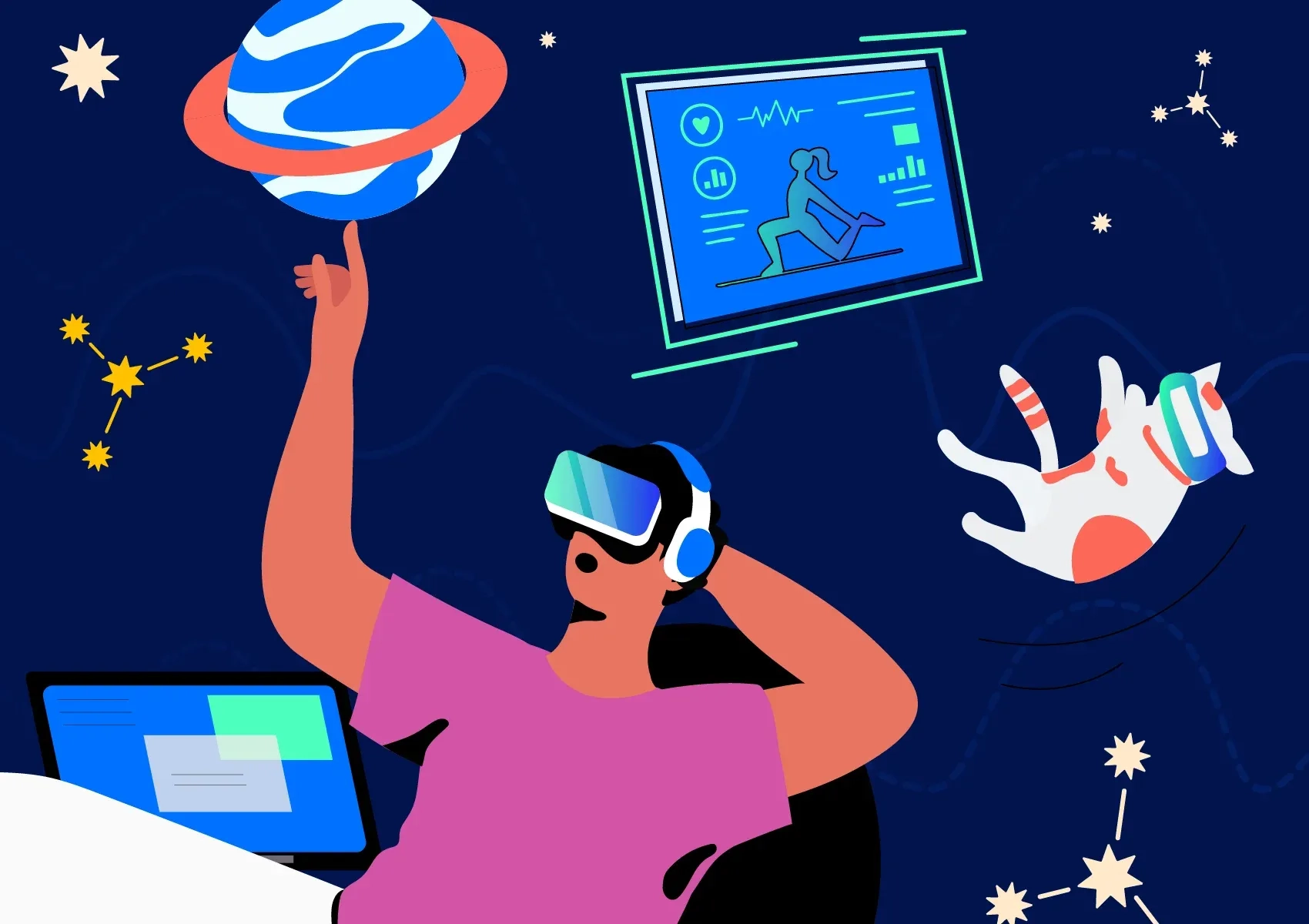Top 10 Augmented Reality (AR) and Virtual Reality (VR) Platforms in 2025

Strong 8k brings an ultra-HD IPTV experience to your living room and your pocket.
Augmented Reality (AR) and Virtual Reality (VR) are revolutionizing industries like gaming, healthcare, education, and retail. With rapid advancements in immersive technology, businesses and developers are leveraging these platforms to create engaging experiences.
In this guide, we’ll explore the top 10 AR and VR platforms that are leading the industry, highlighting their key features, use cases, and benefits. Whether you're looking for Virtual Reality companies to build immersive simulations or Augmented Reality companies to enhance real-world interactions, this list has you covered.
1. Unity (AR Foundation & XR Interaction Toolkit)
Best for: Cross-platform AR/VR development
Unity is a powerhouse for AR and VR development, offering tools like AR Foundation (for AR) and XR Interaction Toolkit (for VR). It supports multiple platforms, including iOS, Android, and VR headsets like Oculus and HTC Vive.
Key Features:
Supports both AR and VR development
Real-time 3D rendering
Extensive asset store for 3D models and plugins
Ideal for gaming, training simulations, and enterprise applications
Use Cases:
Gaming (Pokémon GO used Unity for AR)
Military and medical training simulations
2. Unreal Engine (MetaHuman & VR Editor)
Best for: High-fidelity VR experiences
Unreal Engine, developed by Epic Games, is known for its photorealistic graphics. It’s widely used in VR game development, architectural visualization, and film production.
Key Features:
Blueprint visual scripting for non-coders
MetaHuman Creator for ultra-realistic avatars
Native support for Oculus, PlayStation VR, and SteamVR
Use Cases:
VR gaming (Half-Life: Alyx was built with Unreal)
Virtual production in movies
3. Microsoft HoloLens (Mixed Reality Platform)
Best for: Enterprise AR solutions
Microsoft HoloLens is a leading Augmented Reality company offering mixed-reality smart glasses for industrial and enterprise use.
Key Features:
Hands-free holographic computing
Azure Spatial Anchors for shared AR experiences
Used in remote assistance and training
Use Cases:
Medical training (surgeons use HoloLens for 3D anatomy visualization)
Manufacturing and remote maintenance
4. Oculus (Meta Quest & Rift)
Best for: Consumer VR gaming
Owned by Meta (formerly Facebook), Oculus dominates the consumer VR market with its Meta Quest 3 and Rift S headsets.
Key Features:
Wireless VR with inside-out tracking
Extensive VR game library (Beat Saber, Superhot VR)
Social VR platforms like Horizon Worlds
Use Cases:
Gaming and entertainment
Virtual meetings and social interactions
5. Google ARCore (Augmented Reality SDK)
Best for: Mobile AR development
Google ARCore is a leading SDK for building AR apps on Android and iOS.
Key Features:
Motion tracking and environmental understanding
Cloud Anchors for multiplayer AR experiences
Supports Java, Kotlin, and Unity
Use Cases:
Retail (virtual try-ons for furniture/clothing)
Navigation (Google Maps Live View)
6. Apple ARKit (iOS Augmented Reality)
Best for: iOS-based AR apps
Apple’s ARKit is a robust framework for creating AR experiences on iPhones and iPads.
Key Features:
LiDAR scanner support (iPhone Pro models)
Object occlusion and people occlusion
Face tracking for AR filters
Use Cases:
Snapchat/Instagram AR filters
IKEA Place app for furniture visualization
7. Magic Leap (Enterprise AR Solutions)
Best for: Spatial computing
Magic Leap is a pioneer in AR wearables, focusing on enterprise and healthcare applications.
Key Features:
Lightweight AR glasses (Magic Leap 2)
Digital twin technology for industries
Secure cloud-based AR solutions
Use Cases:
Medical imaging and diagnostics
Industrial design and prototyping
8. Pico (VR Headsets for Enterprise & Consumers)
Best for: Business and entertainment VR
Pico, owned by ByteDance, offers standalone VR headsets like Pico 4 and Pico Neo 3.
Key Features:
High-resolution displays
Enterprise-focused VR solutions
Competes with Meta Quest
Use Cases:
Corporate training
VR fitness and gaming
9. Vuforia (Industrial AR Platform)
Best for: Manufacturing and engineering AR
Vuforia, by PTC, is a top choice for industrial Augmented Reality companies.
Key Features:
Object recognition and tracking
Supports smart glasses and mobile AR
CAD model integration
Use Cases:
Assembly line guidance
Equipment maintenance instructions
10. HTC Vive (Premium VR Experiences)
Best for: High-end VR setups
HTC Vive is a leader in premium VR hardware, offering Vive Pro 2 and Vive Focus 3.
Key Features:
SteamVR compatibility
Full-body tracking for VR
Enterprise VR solutions
Use Cases:
VR arcades and professional simulations
Architectural walkthroughs
Conclusion: Choosing the Right AR/VR Platform
The best platform depends on your needs:
For gaming & entertainment: Oculus, Unreal Engine
For enterprise AR: Microsoft HoloLens, Magic Leap
For mobile AR: Google ARCore, Apple ARKit
For high-end VR: HTC Vive, Pico
Whether you're partnering with Virtual Reality companies for immersive training or Augmented Reality companies for interactive marketing, these platforms provide cutting-edge solutions.
Stay ahead in the immersive tech revolution by leveraging these top AR/VR platforms in 2025!
Note: IndiBlogHub features both user-submitted and editorial content. We do not verify third-party contributions. Read our Disclaimer and Privacy Policyfor details.


